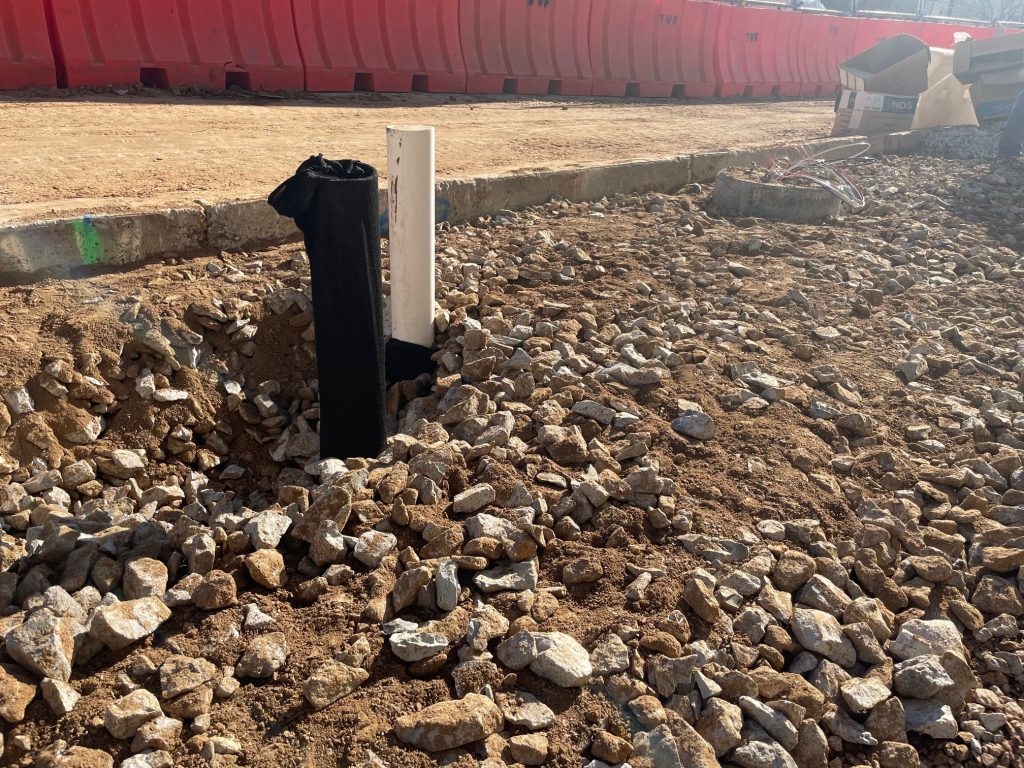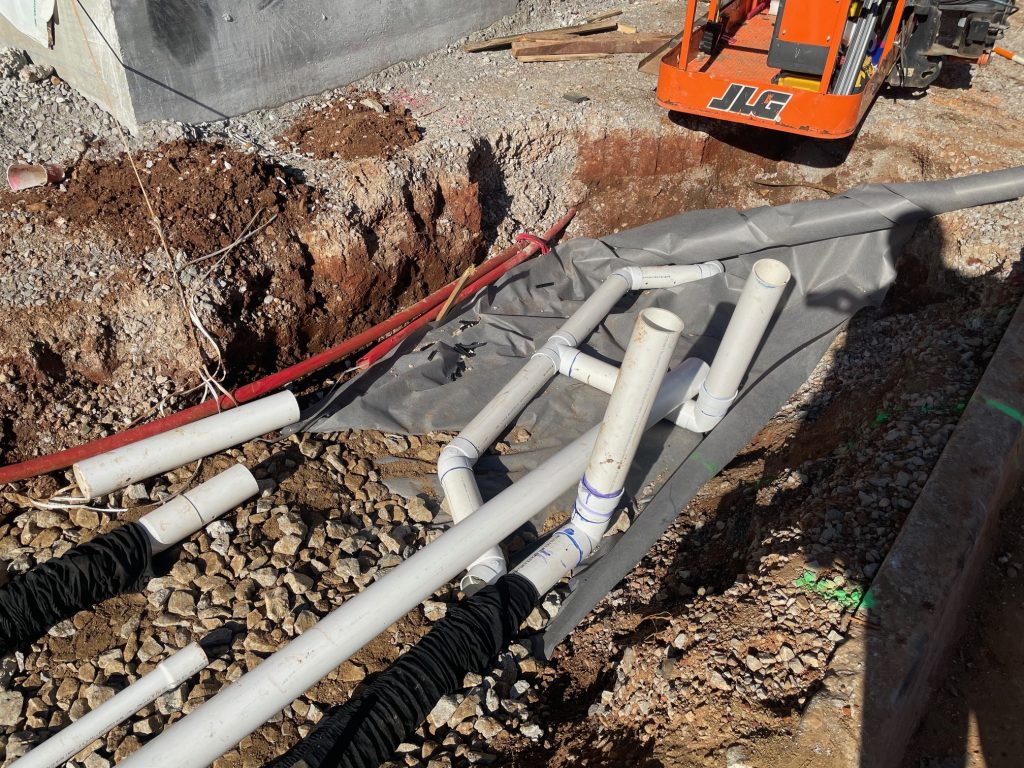Planting an urban treescape at City Hall
Published on February 27, 2024
The plan to finish the outdoor spaces of the exterior of Huntsville’s soon-to-open new City Hall includes trees, of course. But it also includes trenches, pipes and a certain type of rock and soil mixture to facilitate the growth of those trees.
It’s a fascinating process that will play out underground, allowing the trees to grow despite their urban, concrete environment.

The plan around the exterior of the building calls for alternating streetlamps and trees. City Arborist Marc Byers selected swamp white oaks, natives that could grow as tall as 40 feet with a canopy of about 40 wide as well.
Rooting in concrete
The trees will be planted in a small hole that will be surrounded by concrete sidewalks. So how does a tree grow amid all that concrete and, if it does grow, how do the roots not buckle the concrete sidewalks?
The growing part is where the trenches and pipes come into play. The trenches are about four or five feet deep and that’s where a network of two pipes are placed to feed the tree, so to speak. Both are necessary because the tree will not be naturally fed because the ground around it will be concrete.

One of the pipes provides irrigation to the tree’s roots and the second pipe, an aeration line, provides oxygen.
“The challenge for us is, once it’s installed, is making sure that root ball of the original tree is watered well,” Byers said. That challenge is amplified because the unique soil in which the tree is planted is different from the tree’s natural growing soil.
“So you have to keep the tree wet long enough for those roots to leave the original root ball and get out into the surrounding new soil. The irrigation pipes just provide some moisture more than what would percolate through the opening for the tree.”
Secrets in the soil
Now that the tree’s roots are nourished, they need room to grow. As trees get older, their roots grow further from the tree. In an urban setting, however, that could be problematic. So the trees are planted in a designer soil that includes grade No. 2 rocks that Byers described as being about the size of a tennis ball.
The rocks, mixed with soil ideal for the growth of the trees, provide stability for the ground under the concrete while also allowing the tree roots to grow between them. With that pathway available, the roots are unlikely to disrupt the concrete sidewalks above them.
“Roots require airspace in the soil,” Byers said. “They require the ability for water and nutrients and those sorts of things to move through the soil. And highly compacted soils are death to trees. So, the challenge is in the limited space in an urban environment, how do you create that route? And this is a way to create the space. It’s not without its own challenges. But this is a way to have larger trees downtown without damaging sidewalks or shortening the life of the trees.”
By creating a stone honeycomb before it compacts, there’s still a lot of space in between the rocks. Pre-mixing it with growing media to fill that space allows a tree to survive in an urban environment.
It’s an approach that Byers said has found success in other projects in downtown Huntsville. Similar tree-planting strategies are also in place around the Madison County Courthouse as well as Washington Street.

